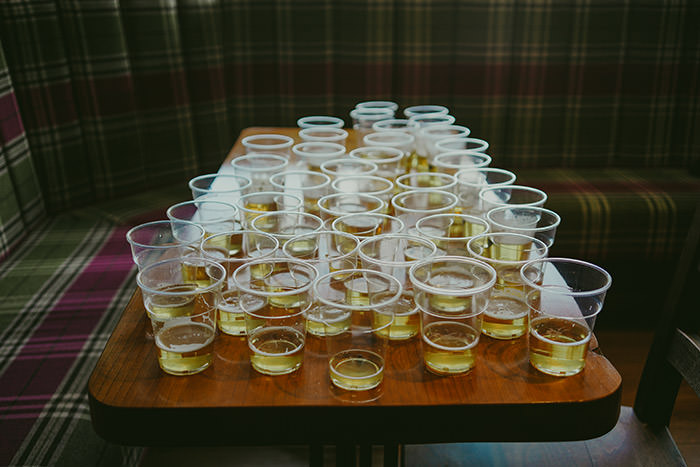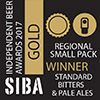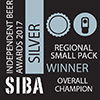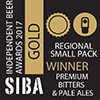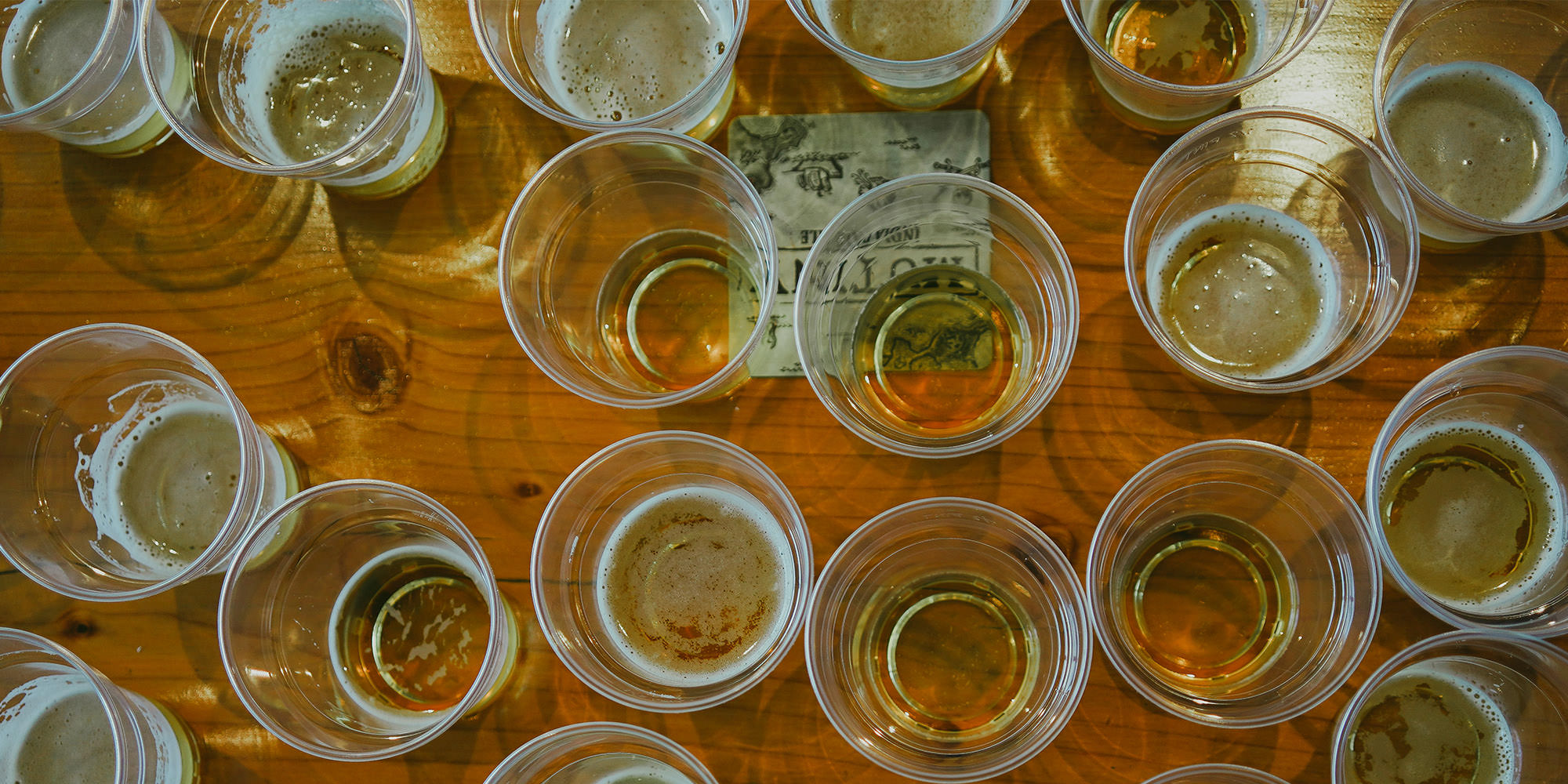
TASTING AND SMELLING TRAITS OF WHAT BAD BEER HOLDS
Dave, our head brewer recently gathered us all together for a bit of an educational lesson on bad beer and the signs to look out for when tasting and smelling. Dave who has 26 years in the brewing industry and somewhat an expert in detecting problems in beer decided that we should all learn the problems in brewing which can cause the beer to defect. It was necessary for all the Wily Fox staff to be involved in the tasting process and this was a great way to ensure that everyone got to experience the actual flavours and smells 1st hand rather than read a description of it.


THE LESSON
Itinerary planned out, plastic cups and beer prepared us for what about to come. Dave had a kit which contained small samples that needed to be mixed with a light beer in order for us to detect the undesirable traits. There were 10 problematic bad beer problems we had to run through, all with their own unique smell and tastes which come from various issues within the brewing process.
First came the palate cleanser of untarnished beer which we could use as a reference sample to compare against the taste or smell of each beer.

THE DEFECTIVE LIST AND WHAT WE PICKED UP
Just to bring you along on our educational journey, here is the full list of defects we had to endure over the 10 courses. It was also very interesting that find out that these are only defects if they are not supposed to be in the beer!
None of these would be acceptable in any of our beers but for other brands, they would be part of their flavour profile.
For example, there are some well-known lagers that have high levels of DMS and certain midlands beers that have high levels of sulphur.
DMS
Dimethyl Sulfide (DMS) is a sulfur compound produced when grain germinates during the malting process. Six row lager malts and Pilsner malts have the highest levels of this compound so it is predominantly found in lagers and can be a positive flavour trait in certain brands. It has the aroma of cooked or creamed corn.
DMS (Dimethyl Sulfide) can also be formed by bacterial contamination or wild yeast.
Light Struck
This only occurs in finished beer and it can give your beer a strong skunky aroma. Light struck beer occurs when beer is exposed to Sunlight as some of the compounds in hops remain photosensitive after brewing. Brown or amber bottles offer greater protection than green or flint bottles against this flavour being formed.
Oxidation
This is a flavour associated with the aging process of beer. Aeration of hot wort will cause the oxygen to chemically bind to various wort compounds. Over time, these compounds will break down, freeing atomic oxygen back into the beer where it can oxidize the alcohols and hop compounds producing off-flavours and aromas like wet cardboard or sherry-like flavours.
If the beer is in any contact with oxygen after fermentation the faster and more severe this reaction occurs
Metallic
This taint occurs when beer or raw materials come into contact with poor quality metal pipework or machinery, particularly by wort being boiled in unprocessed metals (excluding stainless steel). It can also be imparted via packaging – such as metal cans, bottle caps or kegs. Improperly stored grains can also cause metallic off flavours.
Another possible contributor is brewing with water containing high levels of metallic ions.
Phenolic
When a beer is described as phenolic, it is usually with reference to volatile phenols and gives clove-like, smoky, TCP, or medicinal tastes. Volatile phenols have low flavour and aroma thresholds and most people taste and smell them at very low concentrations, sometimes under 10 parts per billion.
Although usually considered an off-flavour, some of these flavours are sought after in certain styles of beers like Belgium or wheat beers
The main sources of volatile phenols are wild or specialty yeasts, Chlorophenol presence in brewing water or chlorine based sanitizers.
H2S
Hydrogen Sulfide, H2S, is a gas that has the distinctive smell of rotten eggs, which easily can overshadow the flavors of fresh malt and hops. Hydrogen sulfide is highly volatile and has a low flavor threshold, measured in parts per billion. Although high levels of hydrogen sulfide are notably offensive to the palate and nose, trace amounts are considered a traditional and accepted characteristic for a few beer styles, particularly English pale ales from Burton-on-Trent. These beers have a strong bitterness and dry finish that is heightened by small amounts of hydrogen sulfide.
Mercaptan
Rotten vegetables, drain-like, sulphury, leek-like, or rotting garbage. This is also the compound they put in propane and natural gas to make it odorous, so it may remind you of propane or natural gas. Mercaptan is most often caused during fermentation by yeast autolysis, but a more likely cause of this off-flavour at detectable levels is infection by anaerobic bacteria.
Sour
Tart, acidic or vinegar like are the main flavours that are produced by bacteria or wild yeast and can be classed as off flavours if they shouldn’t be present in that particular style of beer.
In a traditional English style beer these flavours would be unacceptable and indicate a poor quality or substandard product but there is a whole range of beers such as Belgian sours, Berliner Weise, Fruit beers, Goses, Witbier and Lambic beers that are deliberately infected with bacteria or left for spontaneous fermentation to occur to create these sour flavour profiles.With the rise in the craft beer market, this style of beer is becoming more popular with brewers who are using these techniques to create new beer styles and blur the lines between different beer styles.
Diacetyl
Diacetyl is a natural by-product of fermentation. It is one of two major Vicinal Diketones (VDKs) produced during fermentation, the other being Pentainedione. Diacetyl tastes like butter or butterscotch and in fact, is used in the production of artificial butter flavours.
Butyric
Butyric is an important flavour compound in a number of foods in addition to beer. However, at concentrations above its beer flavour threshold (2 mg/L), it causes cheesy, rancid, baby vomit, or putrid off-flavours. Abnormal concentrations in beer can arise from infections by anaerobic spore-forming bacteria of the genus Clostridium.
